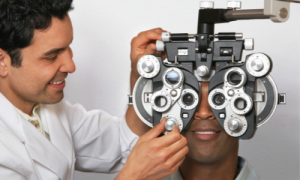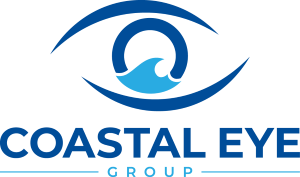May: the month of…
Along with being Mental Health Awareness month, did you know that May is also Healthy Vision Month?

That means if you haven’t had a comprehensive dilated eye exam in a while, you need to schedule one ASAP. During a comprehensive dilated eye exam, an eye care professional will use drops to widen the pupils to check for common vision problems and eye diseases. This type of eye exam is the best way to determine if you need glasses or contacts. These eye exams are also the best way to monitor for the early stages of any eye-related disease. Eye exams don’t only uncover eye diseases though, they are the window into your general health and can catch many other health conditions, as discussed in this previous Coastal Eye Group blog post. It is important to take care of your eyes because it can also benefit your overall health. In fact, people with vision problems are more likely to suffer from diabetes, poor hearing, heart problems, high blood pressure, lower back pain, and strokes, while also having increased risk for falls, injury, and depression, than those without vision problems.
All in all, taking care of your eyes should be a priority just like eating healthy and physical activity, and it should be a priority for all ages. Vision problems tend to develop as we age, hence vision problems being more common among older adults; however, the CDC states that preschoolers may not see as well as they could due to like amblyopia (lazy eye), which can stay through adulthood and also cause vision loss in one eye if not treated timely and properly. Unfortunately, according to the CDC, only 1 out of every 7 preschoolers receives an eye exam, and fewer than 1 out of every 4 receives some type of vision screening. It is common for younger children to learn best through observing, but how are they supposed to observe and learn if they cannot see to the best of their ability? Healthy Vision Month exists to create awareness to these statistics and these scenarios.
Healthy Vision Month isn’t only for drawing attention to eye conditions in children though, as there are many eye conditions that older adults can develop that can cause vision loss or blindness. Some of those conditions listed by the CDC include: cataracts (a clouding of the eye), diabetic retinopathy (causes damage to the blood vessels in the back of the eye of those with diabetes), glaucoma (damage to the optic nerve, often with increased eye pressure), and are-related macular degeneration (gradually affects central vision). All of these conditions, as well as others, can be treated and monitored if caught early enough, which is why routine eye exams are so beneficial. In addition to regular comprehensive dilated eye exams, the CDC states that you should visit an eye care professional if you experience:
- Decreased vision
- Eye pain
- Drainage or redness of the eye
- Double vision
- Diabetes
- Floaters (tiny specks that appear to float before your eyes)
- Circles (halos) around light sources
- Flashes of light
Taking care of your eyes should be a priority so that you can make them last your entire lifetime. The possibility of losing your sight can seem daunting, but there are many ways to keep them healthy and to help prevent vision loss:
- Get regular comprehensive dilated eye exams
- Know your family’s eye health history
- Eat right
- Maintain a healthy weight
- Wear protective eye wear whenever playing sports, working certain jobs, and doing certain tasks around the house – if something could hit your eye or get in your eye, wear protection
- Quit smoking (better yet never even start!)
- Clean your hands and your contact lenses (properly)
- Wear sunglasses with 99 to 100% UV-A and U-VB radiation protection
- Give your eyes a rest to reduce eye strain – try the 20-20-20 rule: every 20 minutes, look away 20 feet in front of you for at least 20 seconds
- Maintain your blood sugar levels if you have diabetes
According to the CDC, an alarming 93 million Americans are estimated to be at high risk for serious vision loss but only half of those people have visited an eye doctor in the past 12 months. Vision disability is one of the top 10 disabilities about adults 18 years and older, and it is one of the most prevalent disabling conditions among children. These are only a couple of the multitude of statistics that the CDC provides on its website, but they are enough to create concern. If knowing there is an entire month dedicated to bringing awareness to the importance of vision health isn’t enough convincing for you, check out the rest of the statistics and even related articles provided be the CDC at the links below. Don’t wait until it’s too late to get your comprehensive dilated eye exam… happy May and happy Healthy Vision Month!

Resources:
https://www.cdc.gov/visionhealth/healthyvisionmonth/index.htm
https://www.cdc.gov/visionhealth/risk/tips.htm
https://www.cdc.gov/visionhealth/basics/ced/fastfacts.htm

